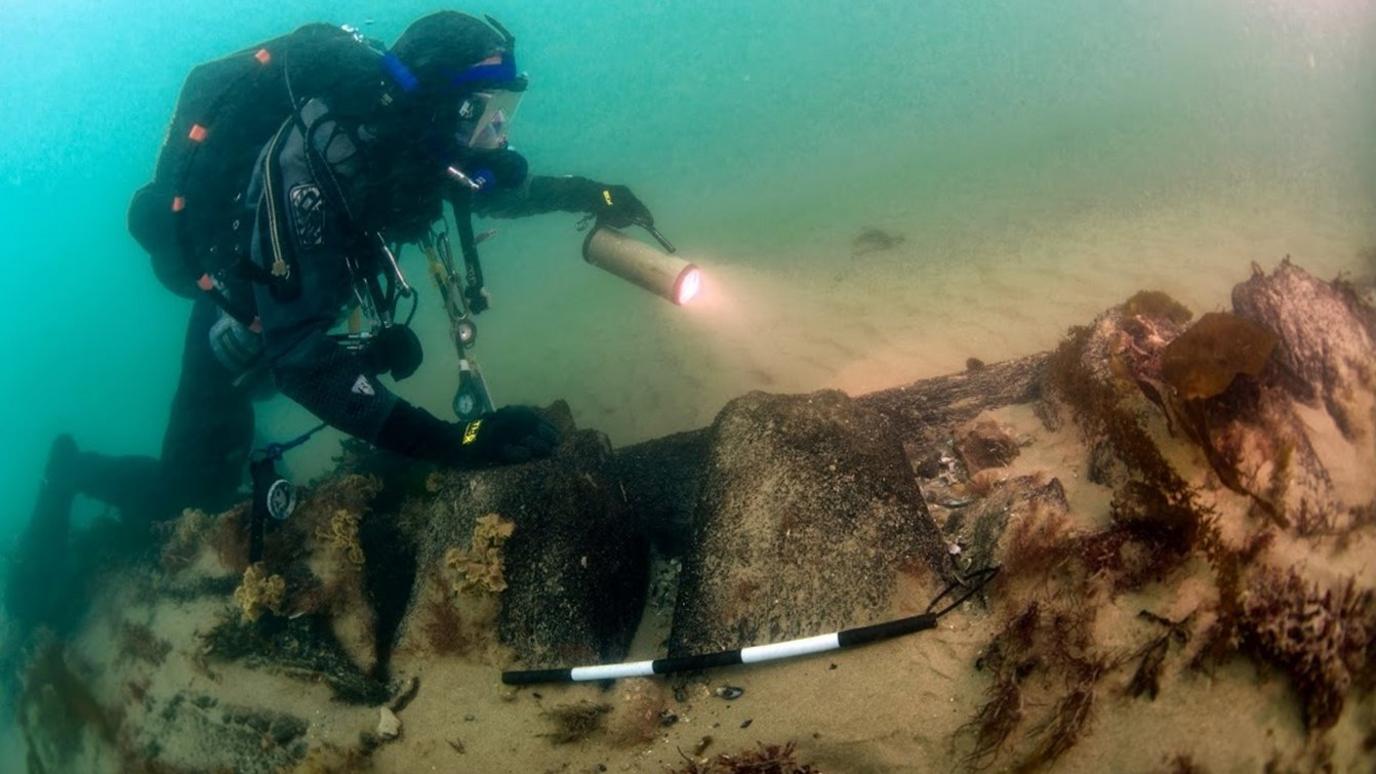HMS Invincible shipwreck: Rudder found on Solent seabed
- Published
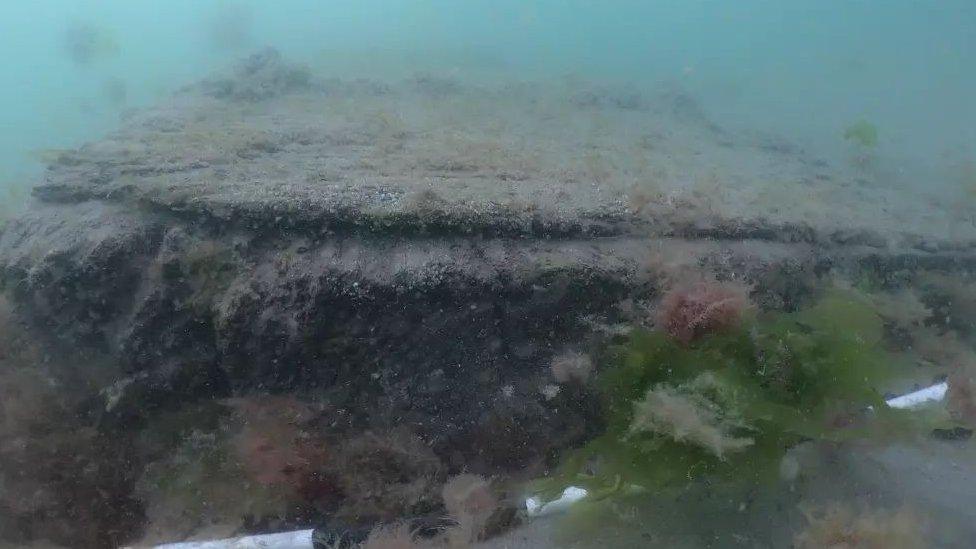
The rudder was discovered in tact, 60m (200ft) from the main structure of the wreck
The lost rudder of a warship that sank in the Solent in 1758 has been discovered on the seabed, 60m (200ft) away from the main shipwreck.
HMS Invincible - built by the French in 1744 and captured by the British in 1747 - is regarded as one of the most significant warships of its time.
The 11m-long intact rudder was spotted during a routine inspection of the site near Portsmouth.
Marine archaeologist Dan Pascoe said it was "unique and significant".
"We weren't particularly looking for it. A feature had showed up in geophysical surveys, 60m off the stern," he said.
"It looks like it's in pretty good condition and is complete from top to bottom."
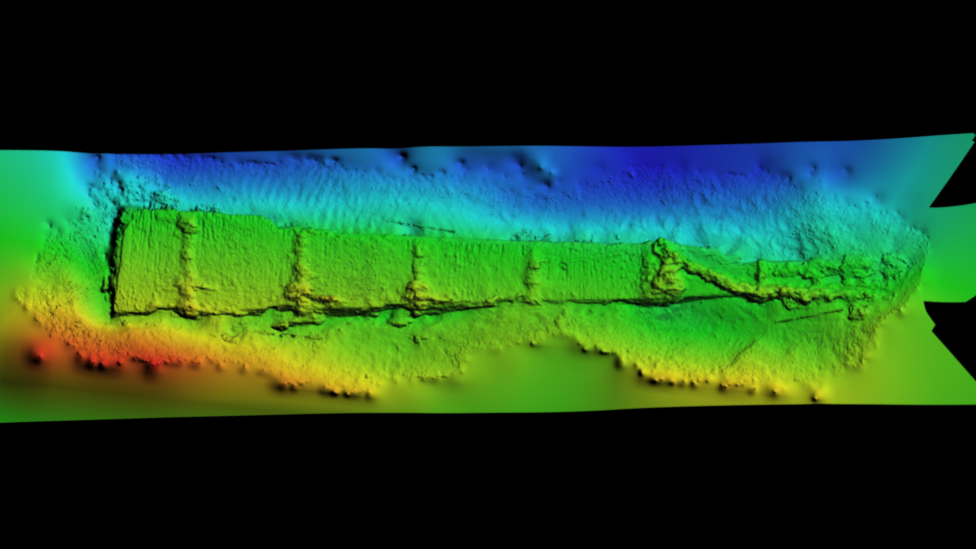
The 11m-long rudder has been scanned on the seabed
The 74-gun ship was lost when the rudder jammed and it ran aground on a sandbank between Langstone Harbour and the Isle of Wight, capsizing three days later. No lives were lost.
Mr Pascoe said: "The ship was highly manoeuvrable and the rudder was critical to its design.
"It's the last piece of the jigsaw that tells the story of Invincible. Its a fantastic, wonderful find and extremely rare - it only survived because it was buried."
The rudder is due to be protected with sandbags to prevent it being quickly eroded by the elements underwater, but bringing it to the surface and conserving it could cost up to £80,000, Mr Pascoe estimated.
"It's a unique find - there are no other examples from warships of this era. Its future depends on whether it is financially viable to raise and find somewhere to display it," he added.
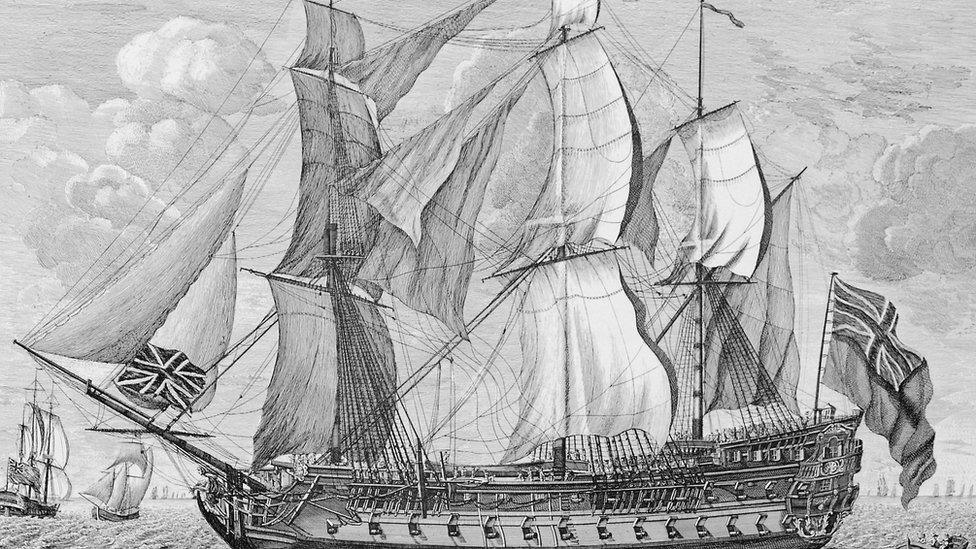
HMS Invincible's class of ships became the "backbone of the Royal Navy", the National Museum of the Royal Navy said
A major excavation project, carried out by Poole's Maritime Archaeology Sea Trust (MAST) and Bournemouth University experts, began on the wreck site in 2017.
Among the artefacts discovered were are a gunpowder barrel, swivel guns, a bottle of corked rum and woodworking tools.
Many have since gone on display at the National Museum of the Royal Navy in Portsmouth.

Follow BBC South on Facebook, external, Twitter, external, or Instagram, external. Send your story ideas to south.newsonline@bbc.co.uk, external.
Related topics
- Published7 June 2018
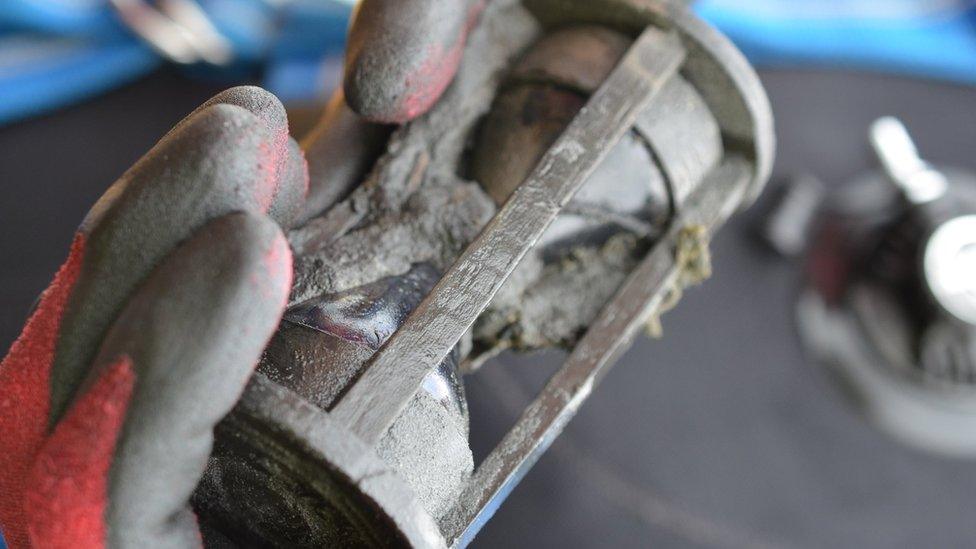
- Published28 November 2017
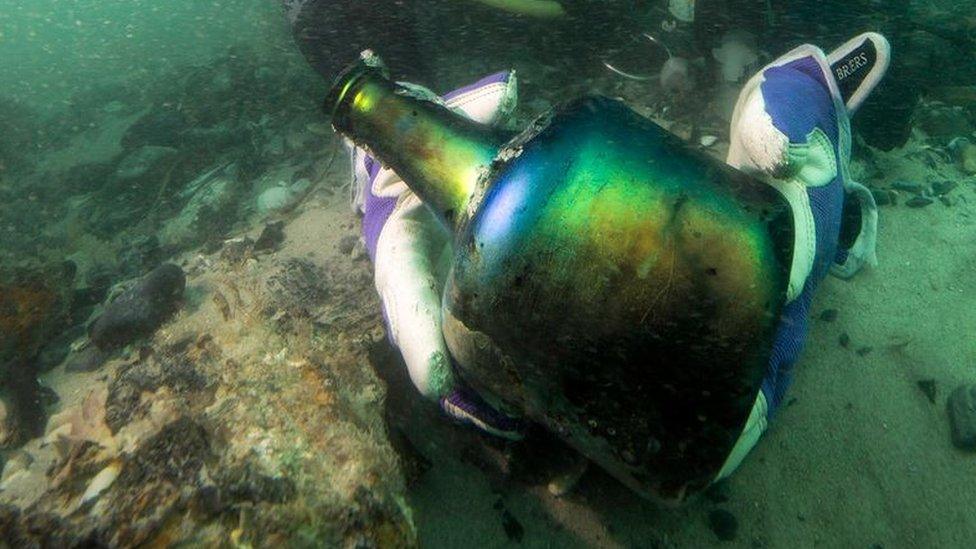
- Published7 July 2017

- Published7 April 2017
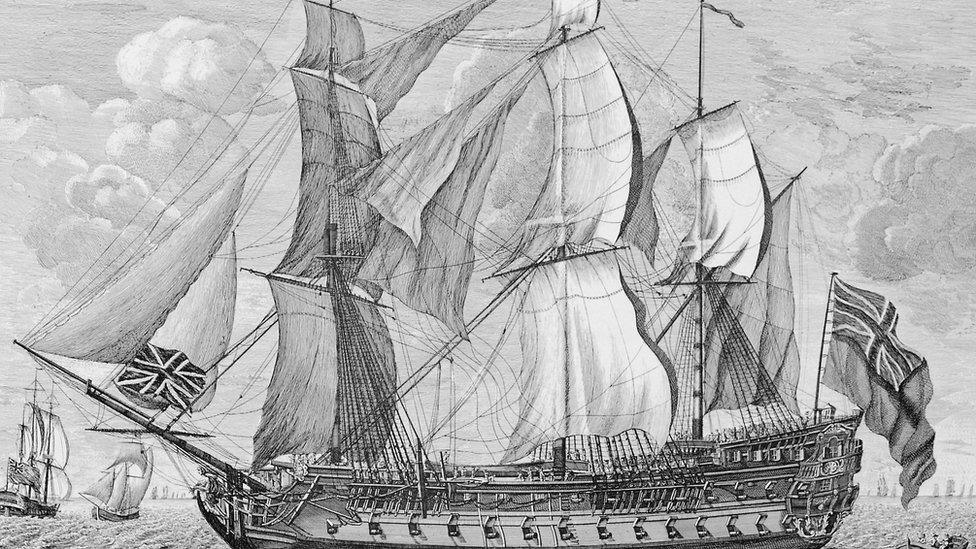
- Published10 October 2013
